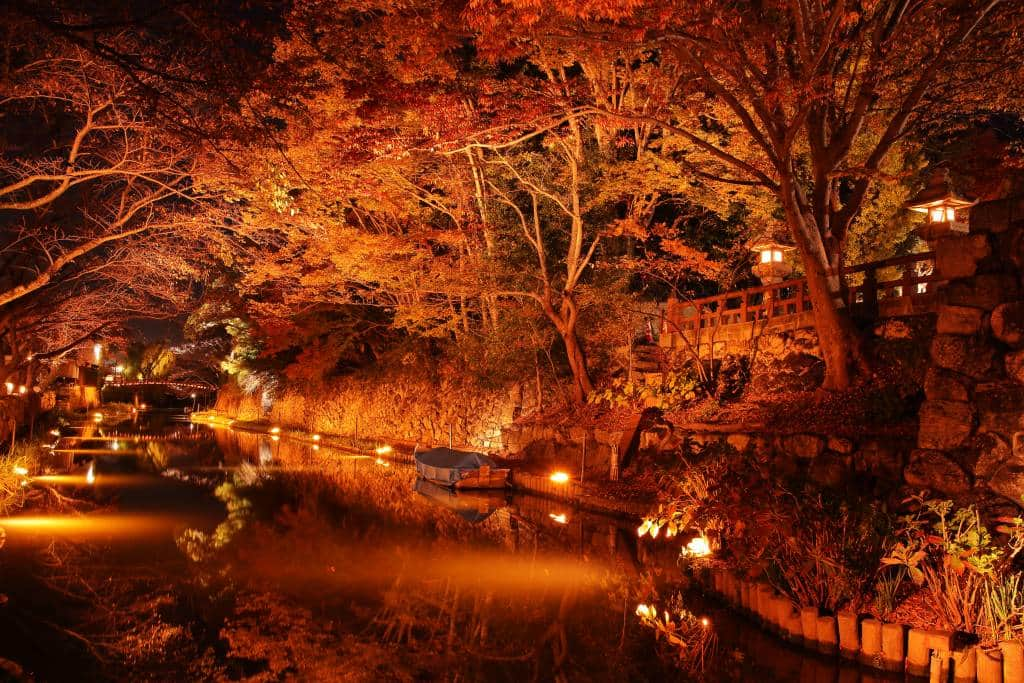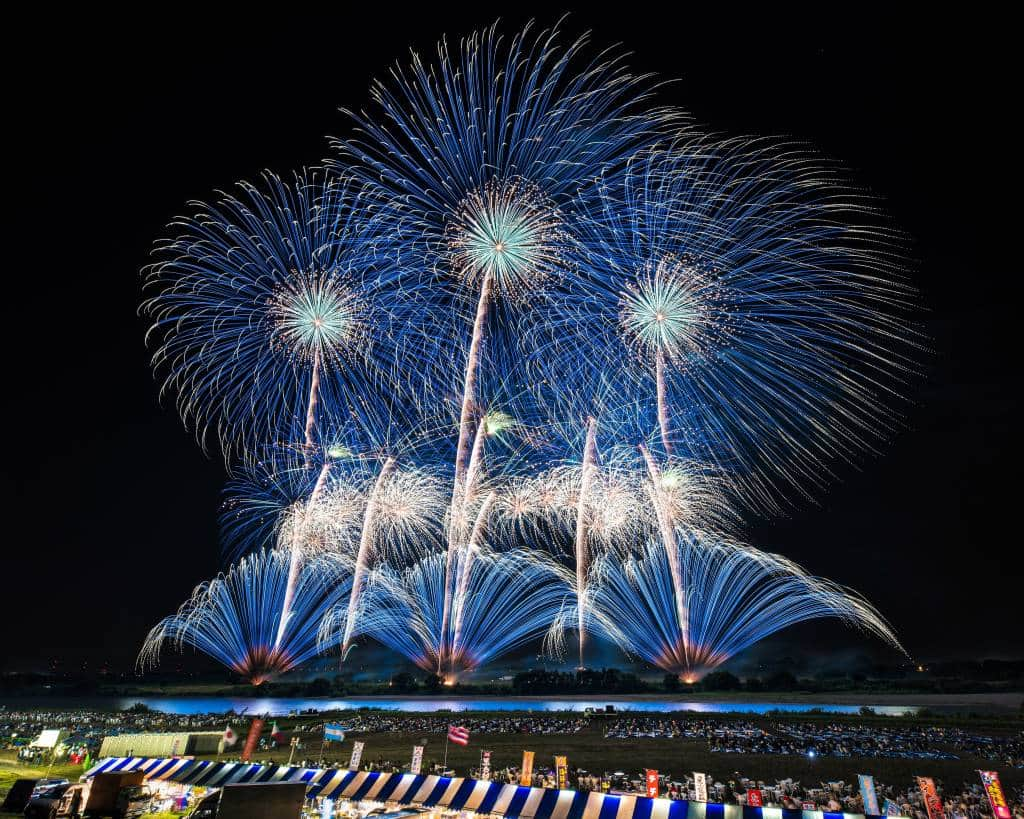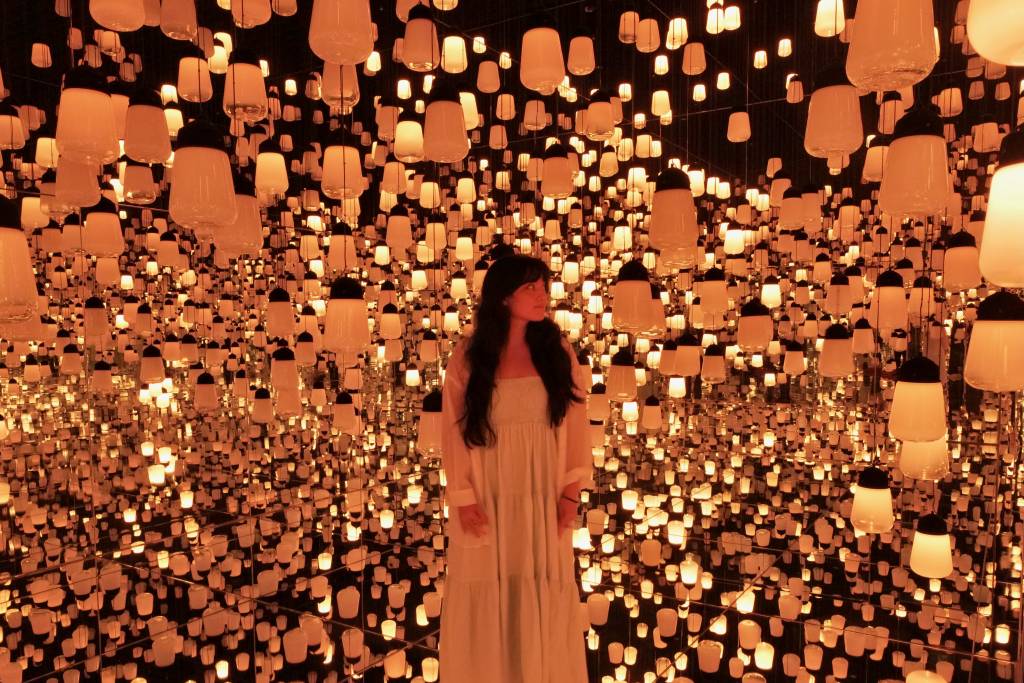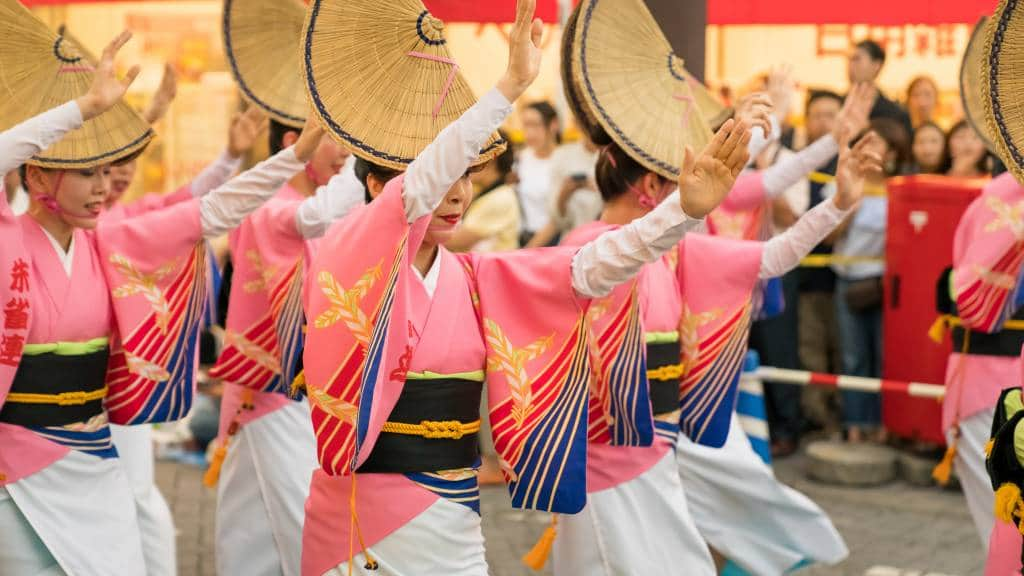What makes Japan so amazing to travel across is the variety—with every new prefecture, city or village you find something unique. Consisting of 47 prefectures, including 43 traditional prefectures, two urban prefectures (Osaka and Kyoto), one territory (Hokkaido) and the Metropolis of Tokyo (in the Kanto region), Japan has a lot of ground to cover, and a lot of surprises to unearth. If you’re thinking of venturing outside of the obvious, here are some highlights to help you pick your prefecture!
We’ve divided them by region, with this post covering the busy area of the Kanto region. Perfect for day trips from your base in Tokyo, you can explore the countryside and enjoy nature, with fruit and flowers taking the stage.
Jump to:
Ibaraki – 茨城県

To the northeastern side of Tokyo, Ibaraki is mountainous in the north and has beautiful lakes elsewhere. The capital, Mito, is home to an impressive art tower, and not too far from Tokyo is Mt. Tsukuba, a great hiking spot.
Sights
- Kairakuen: A park filled with over 3,000 plum trees, this is one of Japan’s top three landscapes. It’s the perfect place to enjoy the plum blossom season from late February through March, with a festival during this time too.
- Ushiku Daibutsu: The second largest Buddha in the world, this statue could hold the Nara Daibutsu in the palm of its hand. You can explore the rooms inside, which are bizarrely magical, and enjoy the park surrounding it.
- Hitachi Seaside Park: A public park filled with carpets of stunning bright flowers which vary through the seasons. This is a popular tourist spot and a breathtaking sight, especially when covered in blue nemophila.

Festival
The Itako Iris Festival is one of the prefectures longest running festivals, held in mid-May to the end of June in a small riverside town. You can enjoy the flowers and see the bridal procession, with soon-to-be or recently married women traveling on gondolas in full wedding gowns to meet their grooms at the other end of the river.
Food
Japan’s home of melons, Ibaraki also has a slightly more dividing local specialty: natto. The smelly, sticky beans are either heaven or hell, but to find out, this is the place to go. With the Tengu natto factory to explore, plenty of restaurants with entire natto courses and of course gift shops to take some home, natto lovers will be in paradise.
Tochigi – 栃木県

A prefecture of natural beauty, Kanto’s Tochigi is particularly stunning in autumn, but has enough sites to keep you busy throughout the year. Soak away in onsen, hike the mountain ranges and ride down the Kinugawa River if you like adventure: all only a few hours from Tokyo.
Sights
- Nikko Tosho-gu: The extremely ornate shrine is home to the Yomeimon gate, said to be so beautiful that you could look at it until sundown without tiring of it. There are five National Treasures of Japan here alone, with a five-story pagoda, beautiful carvings, and hundreds of stone steps leading through the forest to Tokugawa Ieyasu’s grave.
- Lake Chuzenji and Kegon Falls: When the Daiya River was rerouted by lava flows, the stunning Kegon Falls were formed and are the only exit for the waters of Lake Chuzenji. The lake itself offers amazing views whatever the season, a cool breeze on the hottest of days and amazing views of Mount Nantai in the background.
- Ashikaga Flower Park: The blooming wisteria trees of every color are an impressive sight—and smell amazing—with ancient trees stretching wide and thousands of flowers hanging down around you.

Festival
The Togyo Festival features over 1,000 samurai processing through the streets of Nikko, lead by three portable shrines carrying the spirits of three shoguns. Their arrival at Toshogu Shrine includes dancing and traditional music as well as horseback archery. The festival is held in mid-May.
Food
Known as the kingdom of strawberries, the prefecture is also home to Utsunomiya Gyoza with street stalls galore selling them in the prefectural capital (there’s a festival in November). You can also try local Yamizo soba, made with local buckwheat seeds and the incredibly pure and clean local water.
Gunma – 群馬県

Gunma is a lesser-known prefecture in Kanto with some amazing secrets, in particular the onsen culture, with the water-cooling techniques making an unusual experience. There are dozens of specialty flower festivals throughout the year as well, plus it’s home of the Daruma doll.
Sights
- Kusatsu onsen town: With an ample supply of water too hot to bathe in, here you can see the different traditional ways of cooling water. Those include Yubatake, which has hot water rushing down wooden chutes in the city streets, or Yumomi, which requires the stirring of the water with long wooden sticks. The town is near the green waters of Yugama Lake and is home to the traditional Goza no Yu bathhouse.
- Tsutsujigaoka Park: Boasting over 10,000 azalea trees, this park is home to trees thought to be up to 1,000 years old. Enjoy azalea tunnels, great picnic spots and a festival from mid-April to mid-May.
- Shorinzan Darumaji Temple: Home of the familiar Takasaki Daruma doll, which are touted as bringing good luck, you will have seen all over Japan. Traditionally, you pick a goal and color one of the doll’s eyes. Once the goal is complete, you can color in the second eye and leave the Daruma at the temple. On January 6 and 7, people attend the Shorinzan Nanakusa-Taisai Daruma-ichi street fair to receive a new Daruma doll.

Festival
The Numata Matsuri is unusual and unsettling festival where giant, long-nosed goblin masks replace traditional mikoshi (portable shrines) and are carried only by women during the August parades (an act usually tasked by men).
Food
Yakimanju is a delicacy from the city of Joshu. The steamed manju (sweet rice-flour buns filled with read bean paste) are roasted on a skewer and basted with a sweet and spicy miso sauce. Considered the soul food of the prefecture, there is a giant manju-roasting event at Isesaki Shrine in January.
Saitama – 埼玉県

A small prefecture bordering Tokyo, Saitama has some treats hidden up its sleeve and is perfect for an afternoon out of the city. It’s also a great destination for concerts and sports as it has some of the biggest stadiums in the country!
Sights
- Kawagoe: Saitama’s Little Edo, this area has rows of old storehouses, traditional restaurants, and Kashiya Yokocho (“Penny Candy Alley”), where you can try sweets from times gone by and see the beautiful art of amezaiku—a sweet on which crafters create animals, shapes and beautiful designs.
- Railway Museum: Run by the JR train company, this museum is a great place to learn about the development of railways in Japan, all the way from the dawn of railways to the modern bullet train.
- River boating on Nagatoro: For a little adrenaline, try river boating, either in a traditional boat or a modern white-water rafting boat. It’s a great way to see the natural beauty of the river as well as have fun.

Festival
Chichibu Yomatsuri: One of the top three float festivals in Japan, see six huge floats covered with lanterns parade through the city streets before a two-hour-long fireworks festival in front of the city hall.
Food
Fukashi are a great sweet souvenir from Kawagoe made with wheatbran covered in black sugar—and sold as long sticks at street stalls. You can also try Hiyajiru udon—a cold soup with udon, cucumber and sesame seeds.
Chiba – 千葉県

With plenty more to it than Disneyland and Narita Airport, Chiba is a prefecture with beaches, plenty of giant Buddhas, traditional towns. Plus, it’s the largest producer of Japanese pears.
Sights
- Nokogiriyama: Hiking up “Sawtooth Mountain” not only sounds exciting, it leads you to amazing views of Tokyo Bay and a 30-meter-tall relief carving of the Buddhist Goddess of Mercy. There’s also a cable car option!
- Oyama Senmaida: The nearest terraced rice paddies to Tokyo, this is a great way to see the carefully maintained traditional farming landscapes. They look their best in spring, filled with water, and are stunning at sunset!
- Kikkoman Soy Sauce Museum: This museum is great for a rainy day, providing a unique way to spend an afternoon. Having brewed here since the 17th century, household favorite Kikkoman can teach you everything you need to know about the process, with tastings available too.

Festival
Chiba has two “naked festivals” to see. The Ohara Hadaka Festival features semi-clothed men carrying portable shrines into the sea during September. Alternatively, in February, during the Warabi Hadaka Festival, men daub cold mud from the rice fields on babies before having a giant mud fight!
Food
Famed for deliciously steamed peanuts, Chiba is also home to namerou, a mixed fish dish with horse mackerel, sardines and other local fish seasoned with miso, basil, leeks and ginger.
Tokyo – 東京都

Summarizing the biggest metropolitan city in the world is quite a challenge. Below are just some of the highlights, but feel free to check our 101 thingd to do in Tokyo guide as well as our many event listings and recommendations! Whether you want the traditional feel, the bright lights or the weird museums, Tokyo has it all!
Sights
- Sensoji: Located in Asakusa, this is Tokyo’s oldest temple and one of the most important. It looks amazing at night and is a bustling area during the day thanks to Nakamise Street—the perfect place to see old-style street stalls and to try local specialties.
- Shibuya: The best place to see the Tokyo you know from movies. Shibuya has the bright lights, busy streets and all the food you need, with some great sushi options as well as ramen, soba and okonomiyaki. Stop by the famous Hachiko statue before you cross the iconic scramble crossing!
- Tsukiji: It’s an old favorite, but a good one. While the tuna auction has moved to the more sterile Toyosu Fish Market, Tsukiji offers bustling traditional alleyways where you can try some of the freshest sushi in the world and later head over to nearby Tsukushima to the famous monja street (one of Tokyo’s specialties).

Festival
There are countless, but the Fukagawa Hachiman Matsuri involves a giant water fight, with shrine-carriers being soaked by everyone from passersby to firemen. The Sanja Matsuri is also an unusual opportunity as you can see the tattooed Yakuza members showing off their ink in the streets of Asakusa.
Food
Although you can try everything in Tokyo, it does have some specialties. Head to the yokocho of Shinjuku to try yakitori elbow to elbow with locals, enjoy the first Michelin-star ramen in the world, and cook your own monja-yaki (a more liquid version of okonomiyaki) on a griddle, adding any fillings you like!
Kanagawa – 神奈川県

Just a stone’s throw from Tokyo, Kanagawa retains it’s own charm and has plenty to offer—from the city feel of Yokohama to the beaches, Buddhas and top bathing spots of the country.
Sights
- Kamakura: Once a political powerhouse, Kamakura has a traditional feel and is perfect if you can’t make it to Kyoto. Must-sees include the Hachimangu Shrine and the Great Buddha. You can go hiking, enjoy the beaches and explore the bamboo groves of Hokokuji Temple before having a traditional meal at a local restaurant.
- Yokohama Cup Noodle Factory: Here, you can make you own version of the (in)famous cup noodle—from designing the cup, to picking your fillings to turning the handles for the heat seal. The museum is well-designed, which is fun to explore for kids and adults (potentially even more so for adults).
- Hakone: The top onsen resort near Toyko, Hakone has a cablecar and an impressive ship, and is part of the Fuji-Hakone-Izu National Park, meaning you can stroll to some shrines before you soak in the natural hot springs waters while admiring Mt. Fuji; it doesn’t get much more Japanese than that!

Festival
You may have seen the pictures of the giant phallus from the Kanamara Festival, but you can see it yourself on the first Sunday of April. Though, if you prefer things a little more PC, there are plenty of summer and autumn festivals here too!
Food
The shirasu rice bowl is a delicacy and some of the freshest fish you can eat. The tiny baby whitebait fish are caught fresh that morning and served raw. It is seasonal, but if you go in winter you can try them dried too!
Kanto is perfect for exploring when you’re based in Tokyo, with opportunities to experience the most modern and most traditional elements of the complex culture. Be sure to check out some specialties and enjoy day trips when the city streets get too much!

























